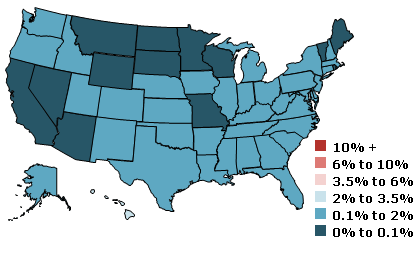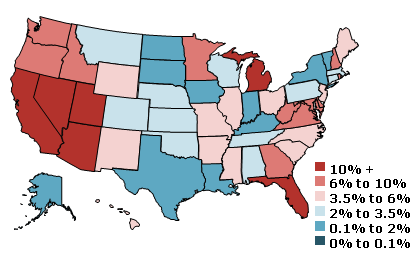
Borrowers thinking about walking away from their homes voluntarily don’t necessarily give up because the mortgage balance exceeds the value of their homes, according to an Economic Letter titled “Underwater Mortgages,” from the Federal Reserve Bank of San Francisco.
The authors, John Krainer and Stephen LeRoy, argue that the decision seems to be heavily impacted by the direction of home prices and default costs, such as relocation and credit score impact.
“To understand why, consider a homeowner who is at the underwater point, with the house value exactly equal to the outstanding balance of the mortgage. Should this borrower strategically default?”
“We argue that the borrower still has incentive to stay in the house. Going forward, the borrower is in a “heads-I-win, tails-you-lose” position vis-à-vis the lender. If house prices fall further, then the borrower can default immediately, so that declines in house prices translate into losses for the lender.”
“On the other hand, if house prices rise, then the gain accrues to the borrower. With no downside risk, the borrower will not actually be indifferent as to whether to default.”
Borrowers Beyond the Point of No Return?
Underwater Mortgages Q4 2000:

Underwater Mortgages Q4 2009:

While this seems to make sense, many borrowers are probably beyond the point of no return, even if home prices appreciate a bit over the next few years.
Consider that the typical homeowner who is currently underwater on their mortgage won’t see positive equity until 2015.
And some won’t see positive home equity until the year 2020, and we’re only talking a few thousand bucks when that does happen. That’s not even enough to part with the property when you factor in the typical transactional costs involved with selling a home.
So you could also argue that these borrowers would be better off ditching their underwater mortgages and starting fresh or renting at a lower cost, especially with mortgage rates so low.
But I suppose the takeaway from the research paper is that strategic default won’t be as bad as some think, which will hopefully keep the shadow inventory in semi-check.
However, we’ve still got the so-called “sidelined sellers” to contend with, so either way things are gonna be hairy.
Back in 2000, the share of underwater borrowers exceeded two percent in just one state, Hawaii.
Nowadays, more than 20 percent of mortgages in hard-hit states like California, Florida, and Nevada are underwater.
Related: Can I refinance with negative equity?
